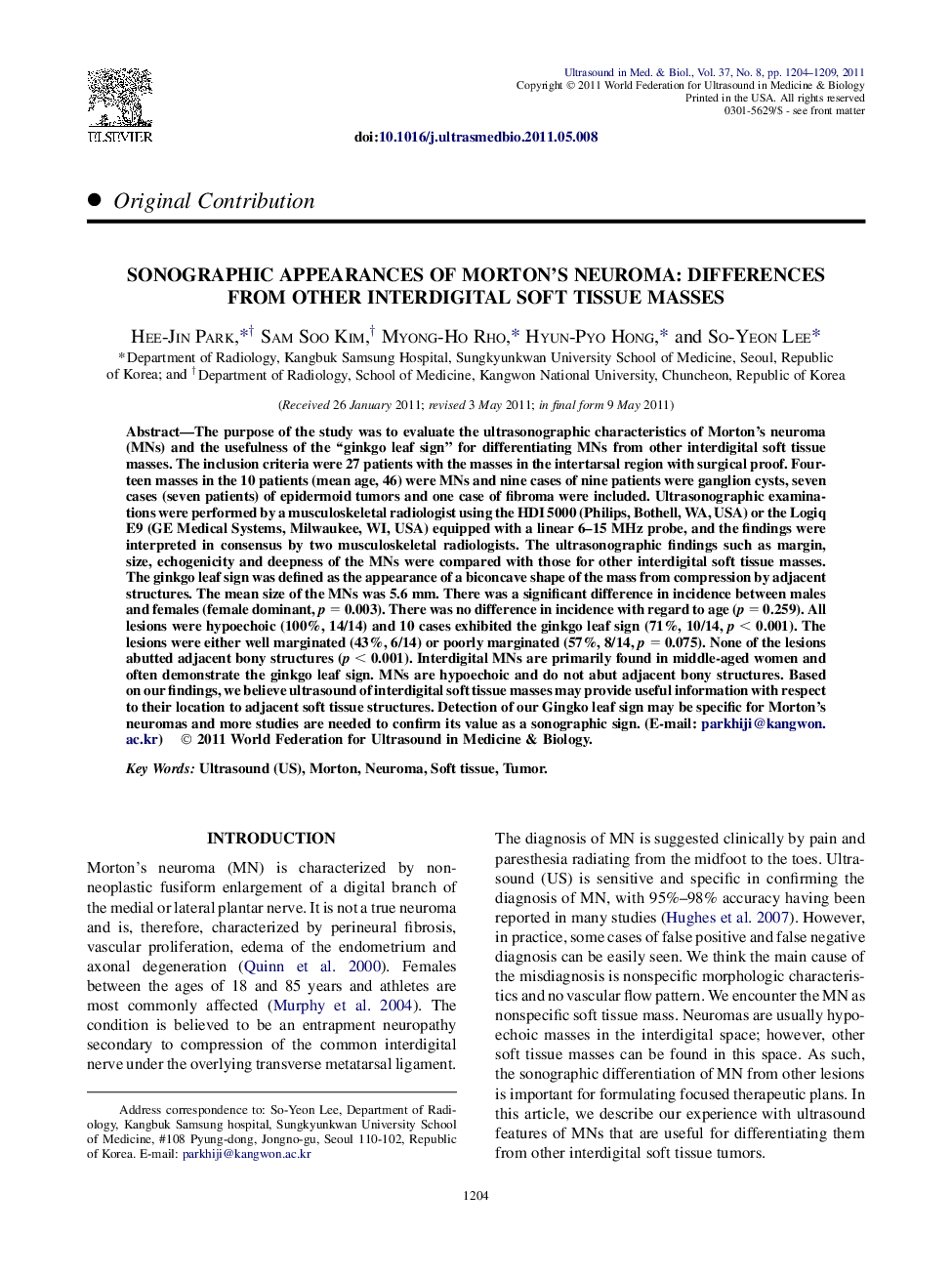| Article ID | Journal | Published Year | Pages | File Type |
|---|---|---|---|---|
| 1761588 | Ultrasound in Medicine & Biology | 2011 | 6 Pages |
Abstract
The purpose of the study was to evaluate the ultrasonographic characteristics of Morton's neuroma (MNs) and the usefulness of the “ginkgo leaf sign” for differentiating MNs from other interdigital soft tissue masses. The inclusion criteria were 27 patients with the masses in the intertarsal region with surgical proof. Fourteen masses in the 10 patients (mean age, 46) were MNs and nine cases of nine patients were ganglion cysts, seven cases (seven patients) of epidermoid tumors and one case of fibroma were included. Ultrasonographic examinations were performed by a musculoskeletal radiologist using the HDI 5000 (Philips, Bothell, WA, USA) or the Logiq E9 (GE Medical Systems, Milwaukee, WI, USA) equipped with a linear 6-15 MHz probe, and the findings were interpreted in consensus by two musculoskeletal radiologists. The ultrasonographic findings such as margin, size, echogenicity and deepness of the MNs were compared with those for other interdigital soft tissue masses. The ginkgo leaf sign was defined as the appearance of a biconcave shape of the mass from compression by adjacent structures. The mean size of the MNs was 5.6 mm. There was a significant difference in incidence between males and females (female dominant, p = 0.003). There was no difference in incidence with regard to age (p = 0.259). All lesions were hypoechoic (100%, 14/14) and 10 cases exhibited the ginkgo leaf sign (71%, 10/14, p < 0.001). The lesions were either well marginated (43%, 6/14) or poorly marginated (57%, 8/14, p = 0.075). None of the lesions abutted adjacent bony structures (p < 0.001). Interdigital MNs are primarily found in middle-aged women and often demonstrate the ginkgo leaf sign. MNs are hypoechoic and do not abut adjacent bony structures. Based on our findings, we believe ultrasound of interdigital soft tissue masses may provide useful information with respect to their location to adjacent soft tissue structures. Detection of our Gingko leaf sign may be specific for Morton's neuromas and more studies are needed to confirm its value as a sonographic sign.
Related Topics
Physical Sciences and Engineering
Physics and Astronomy
Acoustics and Ultrasonics
Authors
Hee-Jin Park, Sam Soo Kim, Myong-Ho Rho, Hyun-Pyo Hong, So-Yeon Lee,
